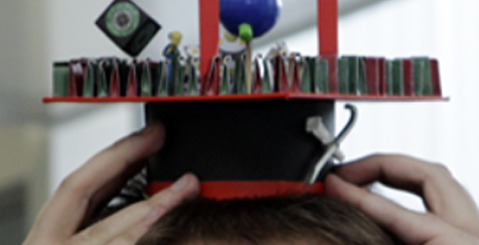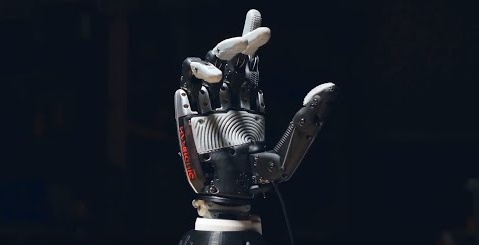Collaborative Research Center
SFB-TRR 161
Quantitative Methods for Visual Computing
We are living in a data society in which data is generated at amazing speed; individuals, companies, organizations, and governments are on the brink of being drawn into a massive deluge of data. The great challenge is to extract the relevant information from vast amounts of data and communicate it effectively.
Typical scenarios include decision and policy making for urban and environmental planning or understanding relationships and dependencies in complex networks, e.g., social networks or networks from the field of bioinformatics. These scenarios are not only of interest to specialized experts; in fact, there is a trend toward including the broad public, which requires the information to be presented in a reliable, faithful, and easy-to-understand fashion.
Visual computing can play a key role in extracting and presenting the relevant information.
In visual computing research the aspect of quantification is often neglected. The SFB-TRR 161 seeks to close this gap.
The long-term goal is to strengthen the research field by establishing the paradigm of quantitative science in visual computing.
News
July 2025
New Exhibition „Arriving? Migration, Faith and Identity” Opens in Konstanz
SFB-TRR 161 supports interactive exhibition designed by university students.
» more »
June
ERC Advanced Grant for Albrecht Schmidt
Leader of SFB-TRR 161 Project C06 explores and develops AI systems that store and process human experiences.
» more »
ETVIS Workshop at ETRA 2025
Successful workshop co-organized by SFB-TRR 161 members examines the intersection of eye tracking research with visualization.
» more »
SFB-TRR 161 Events
Oct 6th - 7th, 2025, full days
Internal Status Seminar of the SFB-TRR 16
Oct 10th, 2025, 4 pm - 6 pm
University of Stuttgart
Lecture | Title tba
Held by:
Till Nagel, Mannheim University of Applied Sciences
Abstract:
tba
Bio:
tba
Location:
University of Stuttgart, Visualization Research Center (VISUS), Room: 00.012
The lecture will be transmitted to the University of Konstanz, Room: ZT1201.
The lecture will be available via WebEx.
Meeting-ID (access code): tba
Meeting password: tba
For participants via WebEx: The transmission will kindly be managed by Patrick Gralka. He will be on site and monitor/manage the WebEx-Session incl. Q&A during and after the talk as well. Please don´t hesitate to get in touch with Patrick in case of questions or problems regarding the transmission/your online participation: Patrick.Gralka@visus.uni-stuttgart.de
All doctoral researchers are asked to take part in the events of the lecture series.
Oct 27th, 2025, 4 pm - 6 pm
Location tba
Lecture | Title tba
Held by:
tba
Abstract:
tba
Bio:
tba
Location:
tba
Nov 10th, 2025, 4 pm - 6 pm
University of Konstanz
Lecture | Title tba
Held by:
Sarah Goodwin, Monash University, Melbourne, Australia (tbc)
Abstract:
tba
Bio:
tba
Location:
tba
Nov 17th, 2025, 4 pm - 6 pm
Location tba
Lecture | Title tba
Held by:
tba
Abstract:
tba
Bio:
tba
Location:
tba
Nov 24th, 2025, 4 pm - 6 pm
University of Konstanz
Lecture | Title tba
Held by:
Tony Huang, University of Sydney (tbc)
Abstract:
tba
Bio:
tba
Location:
tba
Dec 1st, 2025, 4 pm - 6 pm
University of Stuttgart
Lecture | Title tba
Held by:
Heike Leitte, RPTU University Kaiserslautern-Landau (tbc)
Abstract:
tba
Bio:
tba
Location:
tba
Dec 8th, 2025, 4 pm - 6 pm
Location tba
Lecture | Title tba
Held by:
tba
Abstract:
tba
Bio:
tba
Location:
tba
Dec 15th, 2025, 4 pm - 6 pm
Location tba
Lecture | Title tba
Held by:
tba
Abstract:
tba
Bio:
tba
Location:
tba
Jan 12th, 2025, 4 pm - 6 pm
Location tba
Lecture | Title tba
Held by:
tba
Abstract:
tba
Bio:
tba
Location:
tba
Jan 19th, 2025, 4 pm - 6 pm
Location tba
Lecture | Title tba
Held by:
tba
Abstract:
tba
Bio:
tba
Location:
tba
Jan 26th, 2025, 4 pm - 6 pm
Location tba
Lecture | Title tba
Held by:
tba
Abstract:
tba
Bio:
tba
Location:
tba
Feb 2nd, 2025, 4 pm - 6 pm
Location tba
Lecture | Title tba
Held by:
tba
Abstract:
tba
Bio:
tba
Location:
tba
Further Information & Resources
YouTube
The SFB-TRR 161 produces videos to give insights into the projects and the ongoing research. Please visit our YouTube Channel.
Graduate School

PhD students of the projects at the Universities of Stuttgart and Konstanz learn and do research together on their way to their doctoral degree in visual computing.
Visual Computing Blog

The scientists of the SFB-TRR 161 as well as guest authors blog about their activities in computer graphics, visualization, computer vision, augmented reality, human-computer interaction, and psychology.
Partners of the SFB-TRR 161
FOR SCIENTISTS
Projects
People
Publications
Graduate School
Equal Opportunity
FOR PUPILS
PRESS AND MEDIA
© SFB-TRR 161 | Quantitative Methods for Visual Computing | 2019.





















